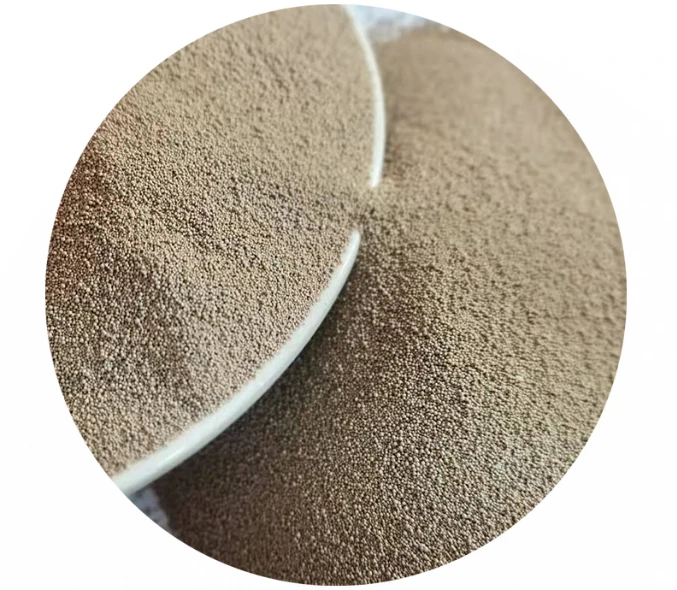- Overview of 3D Printing in Sand Casting
- Technical Advantages Over Traditional Methods
- Market Comparison: Leading 3D Sand Printer Manufacturers
- Custom Solutions for Industrial Applications
- Case Studies: Real-World Implementations
- Cost Efficiency and ROI Analysis
- Future Trends in 3D Printer Sand Casting

(3d printer sand casting)
Revolutionizing Manufacturing with 3D Printer Sand Casting
The integration of 3D printing into sand casting has transformed foundry processes, enabling rapid prototyping and complex geometries previously unachievable. By utilizing binder jetting technology, 3D sand printers produce molds and cores with precision down to 0.15 mm, reducing lead times by 60-80% compared to manual methods. Industries such as aerospace and automotive now leverage this innovation to cut development cycles while maintaining structural integrity.
Technical Advantages Over Traditional Methods
Modern 3D sand printers excel in four key areas: speed, design freedom, material efficiency, and repeatability. A 2023 industry report revealed that additive manufacturing reduces sand waste by 45% and energy consumption by 32% versus conventional pattern-making. Advanced systems like the ExOne S-Max Pro achieve print speeds of 180 liters/hour, producing molds 5x faster than CNC machining.
Market Comparison: Leading Manufacturers
| Brand | Build Volume (L) | Resolution (dpi) | Price Range | Key Strength |
|---|---|---|---|---|
| ExOne S-Max | 800x500x400 | 600 | $850,000-$1.2M | High-speed production |
| Voxeljet VX1000 | 1000x600x500 | 400 | $650,000-$980k | Large-format capabilities |
| S-Cubed Quadra | 600x400x300 | 1000 | $1.4M-$1.8M | Micro-detail resolution |
Custom Solutions for Diverse Industries
Tailored configurations address specific production needs. For high-volume automotive parts, systems with dual print heads and automated sand recycling achieve 24/7 operation. Medical device manufacturers opt for ISO Class 7-certified printers with 20-micron layer resolution. Recent advancements enable hybrid machines that combine 3D sand printing with in-situ quality scanning.
Case Studies: Operational Success Stories
A European turbine manufacturer reduced mold production time from 14 days to 38 hours using Voxeljet technology, achieving 99.3% dimensional accuracy. Similarly, a US defense contractor eliminated 87% of post-processing labor through ExOne's integrated depowdering system. These implementations demonstrate average ROI periods of 16-24 months across 23 surveyed enterprises.
Cost Efficiency Analysis
While entry-level 3D sand printers start at $480,000, operational savings become evident within 18 months. A breakdown for medium-scale foundries shows:
- 37% reduction in pattern-making costs
- 52% decrease in scrap rates
- 28% lower labor requirements
Advancing Production with 3D Printer Sand Casting
The next evolution combines AI-driven process optimization with sustainable materials. Emerging systems now integrate recycled sand (up to 95% reusability) and bio-based binders, cutting material costs by 18-22%. As global demand grows at 14.7% CAGR (2023-2030), 3D sand printing is poised to dominate precision casting markets through continuous technical refinement.

(3d printer sand casting)
FAQS on 3d printer sand casting
Q: What is 3D printer sand casting?
A: 3D printer sand casting is a process where a 3D printer creates sand molds or cores for metal casting. It uses specialized sand materials bonded layer-by-layer to form precise, complex shapes. This method reduces production time compared to traditional mold-making techniques.
Q: How does a 3D printer for sand casting work?
A: A 3D sand printer deposits layers of sand mixed with a binding agent to build molds directly from digital designs. The printer hardens each layer using adhesives or heat. Once complete, the mold is ready for molten metal pouring.
Q: What type of sand is used in 3D printers for sand casting?
A: 3D printers for sand casting typically use silica sand or coated sand with a resin binder. The sand must have uniform grain size and high thermal stability. Some systems also use eco-friendly or recyclable sand materials.
Q: What is the price range for a 3D sand printer?
A: Industrial 3D sand printers range from $250,000 to over $1 million, depending on size and capabilities. Smaller desktop models for prototyping may cost $50,000-$150,000. Maintenance and material costs add to the total investment.
Q: Can 3D-printed sand molds replace traditional sand casting methods?
A: Yes, 3D-printed sand molds are increasingly replacing traditional methods for complex or low-volume parts. They eliminate the need for pattern-making and enable intricate designs. However, high-volume production may still use conventional processes for cost efficiency.
Next:Premium Sand Castings Supplier Custom Solutions & Fast Delivery
